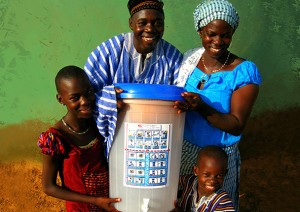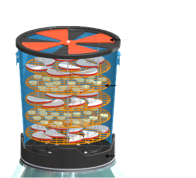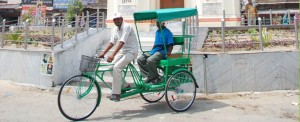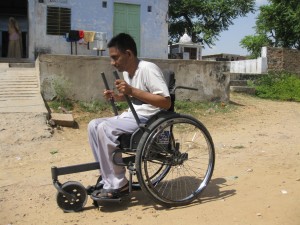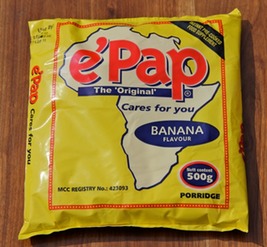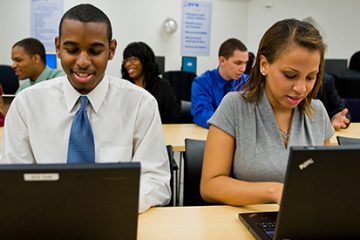“The Valley of Death is the chasm between a new social innovation and the market that could greatly benefit from that innovation.” – Professor Gordon Adomdza
“The Valley of Death is where all good products go when you don’t have the right business model to carry them across the valley to successful launch.” – John DiRienzo, class of 2013, currently enrolled in Business Model Design for Social Impact
Three years ago, through conversations with faculty and students around the Boston area, Professor Gordon Adomdza realized that many universities offered courses that gave students the opportunity to develop great social innovations for the poor in the developing world. Although students gained valuable experiences, once the semester was over, more than 90% of these innovations were shelved. The fact that they sat idly on shelves when they could potentially save lives was very disturbing to the Professor. There was no doubt that due to the complexities of local economies, successful deployment of these innovations would require further innovation in funding arrangements, supply chain contracts and business, and non-profit or hybrid models, among other factors.
Initially, Professor Adomdza wondered whether the solution was to create an organization to build business models for deploying social innovations for their specific markets. However, after a presentation to a small interest group in the Boston area, he was advised by Rakesh Pandey, former Director of Research for Bose Corporation, to seriously consider building a course aimed at solving the problem. They involved Professor Sagar V. Kamarthi, Associate Professor of Mechanical & Industrial Engineering at Northeastern, and the trio designed the Business Model Design for Social Impact course which launched this spring semester at NEU and is currently being taught by Professor Adomdza.
Business Model Design for Social Impact– Real Data, Real Solutions, Real Enterprises
The Business Model Design for Social Impact course is a consulting project course. Students select their deployment partner and work in teams to cater the needs of their partners. Adaptations were needed to get the pilot of the course off the ground. Currently, the partners are established or start-up enterprises based in the developing world, which have growth business model or go-to-market business model needs. The students are taught to apply design principles to build business models that can solve their partner’s problems. As Professor Adomdza puts it “We use 9 mini-design projects to build one business model. This is because we take the design process to each of the 9 building blocks of the business model canvas that has been widely accepted in the entrepreneurship community for developing business models”. Employing design thinking means that students have to work hard to understand far away contexts through empathy, use creativity to come up with new ideas for the flow of value and impact in the business model, but also stay objective in evaluating the merits of their proposed ideas.
What is very remarkable about this course is its focus on primary research and real time implementation. Professor Adomdza says “One thing we told the deployment partners was that if you are looking for a bunch of students to do secondary research for you, then this is not for you.” Students are developing and proposing ideas while simultaneously acting on them with their clients. Their data gathering process involves actively interacting with their partners as well as identifying and connecting with other contacts on the ground. They also set up studies, experiments with the partners, or use controlled events to collect real data.
Here’s a brief overview of the 5 business partners/projects and the deployment problems which the students are addressing:
Project 1: Pure Home Water (PHW)
Tamale, Ghana
According to World Health Organization and United Nations statistics, more than one tenth of the global population (780 million people) still lack access to reliably clean water for drinking and cooking. Based in Northern Ghana, Pure Home Water is a small non-profit, started out of MIT, that is tackling this basic human rights problem by manufacturing and selling ceramic pot water filters (AfriClay filters) which improve household water storage and quality.
Deployment problem: Although PHW is offering an essential product; the price that members of that community are willing or able to pay is much lower than the cost of producing the filter for PHW. The PHW team has to find ways to switch the economics around or develop innovative short-term subsidy fixes with a long-term plan towards sustainability.
Project 2: Jola Venture
Cameroon
Jola Venture was founded by an NEU graduate, Roland Fomundam. They are trying to deploy a solar food dryer (SolPOD), which was developed in an NEU capstone course, to help farmers conserve crops longer in a country where an estimated 17 million out of 20 million people depend on agricultural income for their livelihood [1]. The SolPOD can dry food 100 times faster than traditional methods.
Deployment Problem: SolPOD is too expensive for individual farmers, yet it doesn’t have enough capacity to service a larger group of farmers in cooperatives. Therefore students are analyzing the best business model to efficiently maximize the use of this great resource for the right number of farmers groups.
Project 3: EcoCabs
Fazilka, India
On November 21,2008, Fazilka made headlines when it became the first city in the region to be completely car free. Today, rickshaw transportation is its vital form of transportation. Rickshaws are eco-friendly, commuter-friendly, affordable, and promote sustainable jobs for its drivers. The advantage of Ecocabs is that it is the world’s first dial-a-rickshaw business, whereby Indian passengers use their mobile devices to call for rickshaws similar to how we dial Metrocab for a ride. This is a great model for maximizing resources and reaching more customers.
Deployment problem: NEU students are helping Ecocabs expand by designing a business model adaptable to 3 other cities that are completely different in terms of socio-economic factors, business atmosphere, business regulations, etc.
Project 4: GRIT
In developing countries less than 1 percent of the demand for wheelchairs is met by local producers, leaving millions of people either stranded at home with few means to support their own livelihoods, or relying on others to carry them around.[2]
GRIT, an MIT initiative, has developed the Leveraged Freedom Chair, an ‘off-road wheelchair’ which can be used on the rough roads or muddy paths that are common in the developing world.
Deployment problem: In order to reduce the price of the wheelchair for users in the developing world, NEU students are helping GRIT look for market opportunities for the wheelchair in the developed world to subsidize deployment in the developing world.
Project 5: e’Pap
South Africa
E’Pap is a precookedfortified porridge that helps HIV patients and malnourished children increase their body mass and health. A food portion of
delivers 28 nutrients the body requires in a bio-available form. Most times even when the patients are eating good nutrients, their body doesn’t properly absorb them. The bio-availability of e’pap means that the nutrientsin the porridge are designed in a way that tricks the body into absorbing them so that patients can benefit from all the nutrients needed in a well-balanced diet, at an affordable cost. The ‘e’Pap effect’ is seen almost immediately: “Weight gains of between 2 and 5 kilograms are reported within 5 to 10 days plus … marked improvements in energy and concentration, sleep habits and skin condition.”[3] For an HIV patient, good nutrition is critical to help the body process the drugs they take to survive.
Deployment Problem: Students are researching the US market for the possibility of selling e’Pap to hospices or assisted living facilities. The proceeds from sales in the US market would make the product more affordable in the developing world but students need to design a business model that takes into account U.S. health requirements such as FDA approval processes and patient-doctor interactions.
Business Model Design for Social Impact- Vision for the course
-What do you hope your students will take away from this course?
“An appreciation for the complexities of deploying social innovations and an appreciation for the power of frameworks for breaking down problems and coming up with solutions.”- Professor Gordon Adomdza
At the end of the semester students will give reports to their deployment partners as wells a black book list with all the important contacts and connections the students established for their partners during the project. Interested students will also be encouraged to apply for international co-op positions with their deployment partners to implement the models they developed in the class.
Professor Adomdza hopes that this model can be used to help more products leave the shelves and reach the hands of their intended users. He hopes it will evolve to include more direct interactions in the deployment context for realizing stronger business models.
-Would you recommend this course to a friend?
-“Absolutely!”
-Do you think we need to have more courses that combine the classroom theory with the component of working with real businesses?
– “ Yes, 110%- This is a really useful class!”
I like college because we learn the theory and hone our thinking. I like Northeastern because it gives you coops, which gives you hands-on-experience, “so why wouldn’t we want to bring that hands on experience into the classrooms as well?” – John DiRienzo
[1] “Jola Venture | Dell Social Innovation Challenge.” Dell Social Innovation Challenge. N.p., n.d. Web. <http://www.dellchallenge.org/projects/jola-venture>.
[2] Bettex, Morgan. “New Wheelchair Gets Its First Real-world Test.” MIT’s News Office. N.p., 18 Feb. 2010. Web. <http://web.mit.edu/newsoffice/2010/amos-wheelchair-0218.html>.
[3] Kransdorf, Basil. “The E’Pap Effect.” South Africa: The Good News. N.p., 21 Mar. 2006. Web. <http://www.sagoodnews.co.za/health_and_hiv_aids/the_epap_effect.html>.
